In honor of the 100th birthday of television icon Norman Lear (creator of All in the Family, The Jeffersons, Good Times and many, many more) I’ve revised and re-edited this, yes, rather strange round-up originally published in 2013 about New York City and television intros and theme songs.
Please play the TV themes as you scroll through this article. Note that a few of the videos can only be watched on YouTube directly.
And now, on with the show….
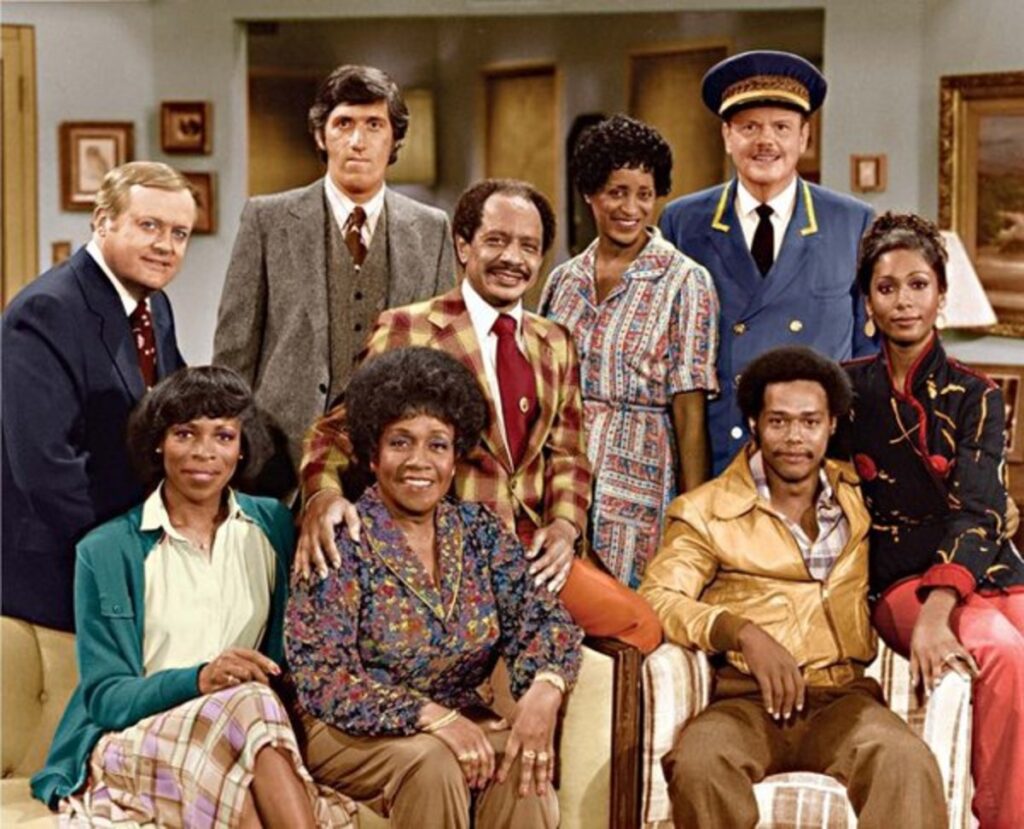
The camera zooms over the New York City skyline as an earnest pop tune — usually devoid of any rhythm or edginess, but insanely catchy — descends as though sent from outer space.
The next shot focuses on one particular landmark, a bridge or a park, letting you know, see we’re not in some television studio in L.A., we’re really here, the Big Apple!
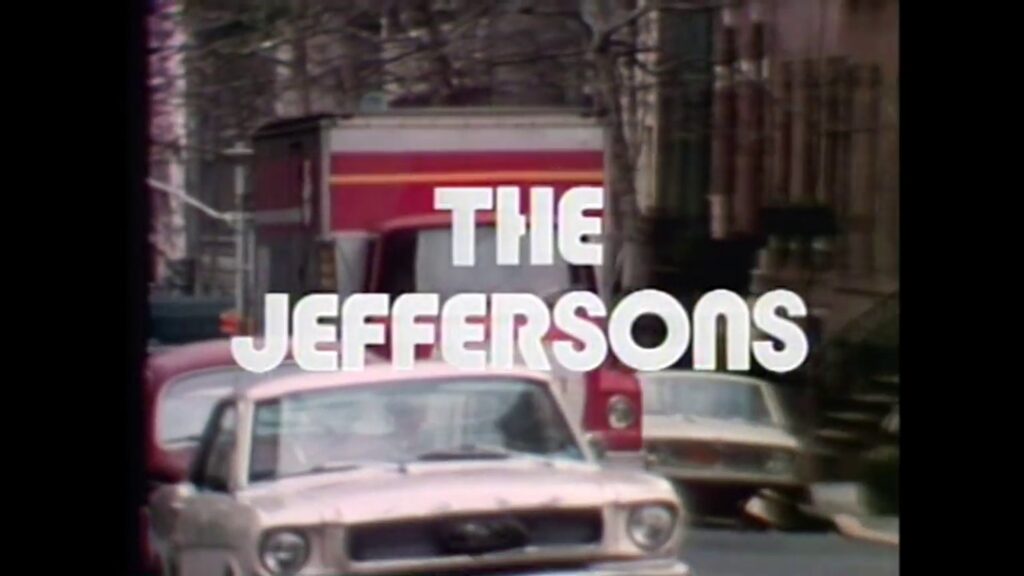
Then the scene abruptly changes to an interior of an office or a flat, uninteresting living room, the cheerful face of a person about to embark into a series of adventures in that very city.
We meet the rest of the cast, a wacky bunch of people, urban people, who find themselves in comedic situations. The city appears again in the background, but we’re already off with our new friends — the stars of 1970s prime time.
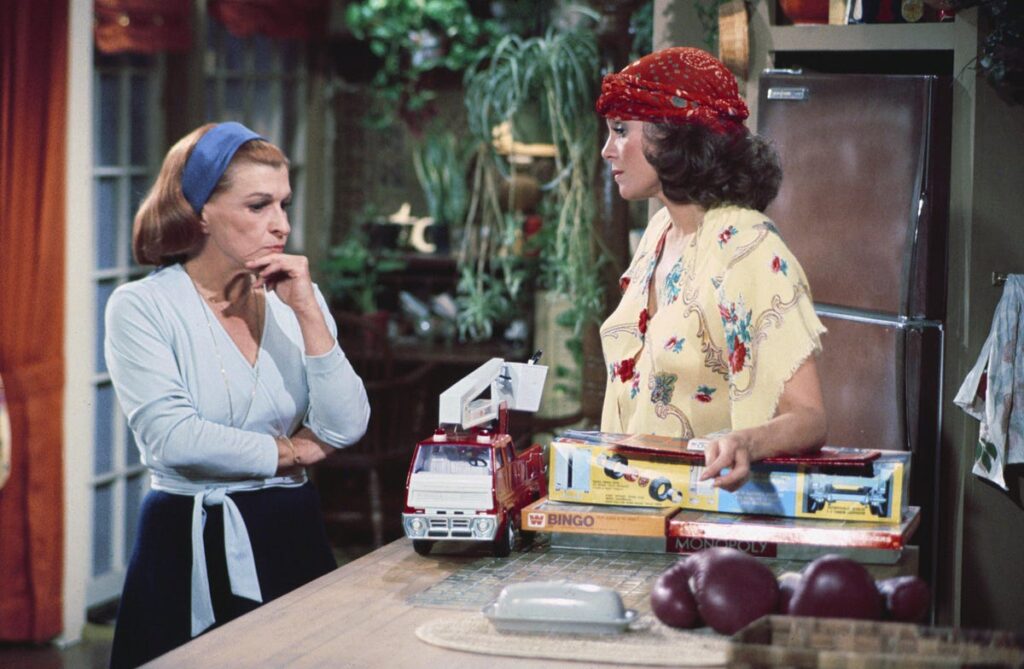
That’s how a great many television programs began during the 1970s. New York City was heavily represented on television during the decade, an easily identified setting that could be depicted in two or three establishing shots before moving on to introduce the stars.
It popped up in no-nonsense crime dramas and sitcoms alike, an almost singular destination for television characters. After the ‘rural purge‘ of folksy TV shows like Beverly Hillbillies and Green Acres (two shows which lampooned the urban snob), there was little room for small-town America; places like Cincinnati, Milwaukee, Chicago and of course Los Angeles filled out the schedule.
In reality, New York was entering a dark period of deteriorating public services, high crime and financial woes. While television news would often dramatically reflect this image out to America, television entertainment would do the opposite.
Few TV series of the period accurately reflected New York’s troubles outside of a few occasional crime dramas and action shows (like 1977’s Amazing Spiderman).
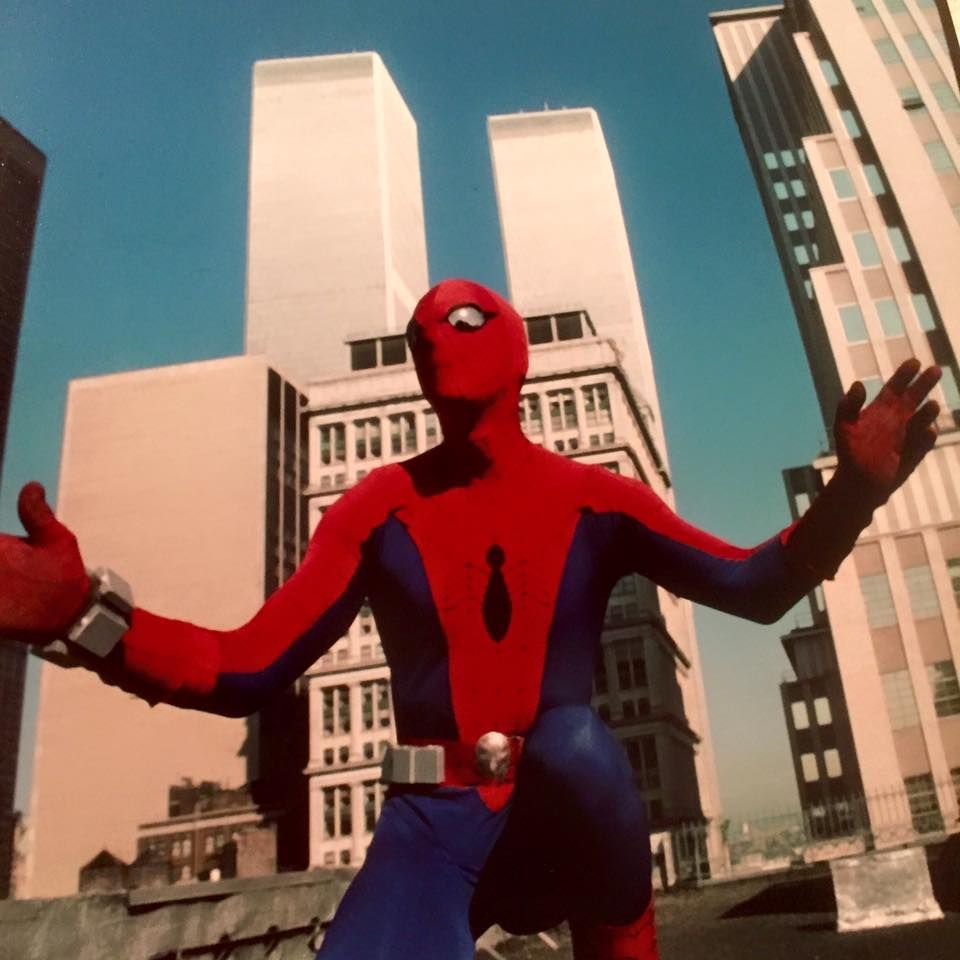
Of course, most television shows about New York City in the 1970s were actually filmed in Los Angeles. And you couldn’t fault sitcom creators for wanting to eschew real-life troubles that would distract from their clean and cheerful worlds of comic misunderstandings.
Even great detective shows like Kojak pulled their punches, largely because reality was often too graphic to present in prime time.
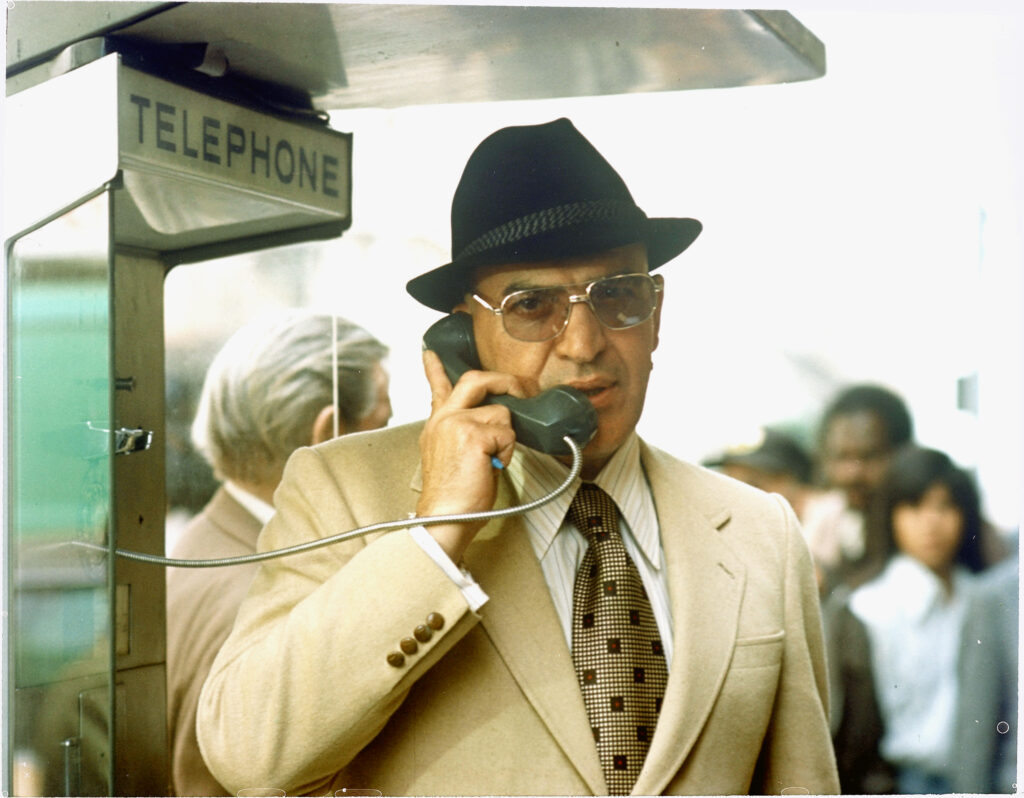
But an alternate world emerges from watching a series of television intros from the 1970s, pulled from top sitcom and dramas of the period. New York City is essentially Midtown and Central Park (but for the few shows that ventured into the other boroughs), glamorous and utterly harmless, without edge.
And in those few shows that did exploit the city’s dangerous side, the intros made clear — through artistically rendered graphics — that the danger was merely of the pulp variety.
A Woman’s Playground
Many shows of the decade presented Manhattan as an aspirational destination, especially for women, even as thousands of people in real life fled the city. Television was finally focusing on the adventures of single women, but to do so, New York had to be depicted as nearly flawless.
The iconic example of this is That Girl starring Marlo Thomas. In this 1970 opener, New York is nothing but glamour, shopping, Lincoln Center and Broadway.
The lousy sitcom On Our Own, New York’s variant of Laverne & Shirley, opens with a couple of crazy gals heading to their job at an advertising agency. The intro actually features a bit of physical violence against one woman, played up for laughs!
Not every show was so blind to the rough edges of New York. But it required a tough lady like Rhoda, a native New Yorker, to maneuver all those sliding locks and tough-talking cabbies. (The third season intro is below, but the first season intro is probably the more memorable one.)
The Hustle-and-Bustle
As with the On Our Own intro, many workplace comedies chose to contrast their wacky interior antics with the frenetic urban rhythms of New York City. It’s as though the comedy you were about to see generates from walking through the crazy, chaotic streets of Midtown.
The intro to the Garment District comedy Needles and Pins ratchets the enthusiasm of That Girl‘s intro down to a quiet, confident strut. Yeah, I work here.
A variation of the buzzing energy of New York City being a impetus for comedy is seen in the intros for Saturday Night Live, even to this day.
The Taxi City
One identifying symbol of New York is the taxicab or, more specifically, the cabbie. While films like Taxi Driver were putting an ominous spin on this image, television still relied on the cab as shorthand for the modern urban experience.
And if you could somehow combine it with a basketball court — as with Busting Loose — then you know it’s really, really New York.
The taxi is a vehicle of love in the romantic comedy Bridget Loves Bernie. There’s no way to see this today as anything other than slightly creepy especially in light of Martin Scorsese’s Taxi Driver (which came out a few years later). This extended intro ticks off all the boxes — cabs, school yards, the Queensboro Bridge, Central Park….
Taxis were so representative of the New York experience that one of the era’s greatest sitcoms was centered around the industry. Taxi survived well into the 1980s showing a more realistic version of New York than other shows of the day.
It also features the Queensboro Bridge, a heavily used symbol for the expanse of the city. Since shows of the period rarely went downtown, the Queensboro could sit in for the Brooklyn Bridge when long vistas of the East River were required. (Taxi actually did go downtown; it was set in a garage at Charles and Hudson Streets.)
The Outer Borough
Television shows often went to the other boroughs when they wanted to express the clashes of modern life, contrasted against a more suburban backdrop which many Americans could more easily identify.
Most everybody knows the iconic theme song from All In The Family as delivered by Carroll O’Connor and Jean Stapleton. What you may not remember is yet another establishing shot of Manhattan, used to contrast with the rows of Queens homes. In these few seconds, the intro excellently sets up the conflicts of modernity, a quiet residential present, and a duo that seem stuck in a sheltered past.
The same sort of pull-away from Manhattan is used in O’Connor’s follow-up series, Archie Bunker’s Place, which yanks the viewer away from the skyline, back over the Queensboro Bridge and down Northern Boulevard. Archie has changed since those years at the piano, and so have his surroundings. The blocks of uniform homes have been replaced with subway graffiti and bustling street life.
13 Queens Blvd went even deeper into Queens but still relied on the establishing shot of Manhattan to let viewers know how far we are from real urban issues. The show’s situations were driven by the comic misunderstandings within an apartment complex, a little like One Day At A Time (set in Indianapolis) or Three’s Company (set in Santa Monica) perhaps. The show didn’t last long.
Brooklyn was represented in the 1970s by Welcome Back Kotter. Set in a fictional high school, it is New Utrecht High School that’s used in the opening. While other sitcoms used a Manhattan establishing shot, Kotter prefers a beat-up sign that announces Brooklyn as the 4th largest city in America. With its painted trains and lines of laundry, this might be the grittiest depiction of New York in a sitcom, even as its high school students (the Sweathogs) were incredibly unrealistic.
Movin’ On Up
Mostly though, sitcoms preferred the fantasy, Manhattan as an Emerald City. (It was literally depicted as such in the 1970s musical The Wiz.) No amount of deterioration seemed to supplant the image of Manhattan as having ‘made it’, especially when dealing with African-American television characters.
Taxis are again the vehicle of transformation in The Jeffersons, plucking George and Louise Jefferson from the land of Archie Bunker — again, using the Queensboro Bridge — and putting them in a luxury accommodation on the Upper East Side.
Two African-American boys are saved by a wealthy white man in Diff’rent Strokes. For emphasis in the intro, Arnold and Willis are playing basketball, the de facto symbol in 1970s television of the inner city.
I don’t know if the show was any good, but the intro to the 1970 sitcom Barefoot In The Park seems refreshing in retrospect. The show, based on the Broadway show, features a young black couple trying to make it though the first years of marriage in Manhattan. It seems to handle the subject with the same euphoria used in ‘That Girl’.
They’re riding a horse-and-carriage drinking champagne! It literally does not get cheesier.
Unvarnished New York
There were a few shows that felt embedded within the actual New York experience. Their intros reflect a certain melancholy, a feeling that perhaps the city was not always a whirlwind of breezy excitement. The champagne remains corked.
Barney Miller is one of the few shows actually set in Greenwich Village. Perhaps as a result, its establishing shot of Manhattan is moody, even dreary, a perfect backdrop for a comedy television show about criminal behavior.
In the opening to The Odd Couple, New York is an embodiment of its characters’ anxieties and differences. There is no establishing shot of Manhattan, no attempt to glamorize the big city. These two are actually at odds with the city, not each other, as presented here. The intro ends with a rare pan-up of the two characters with the city looming behind them.
The Wild East
In an opposite reaction to rural shows like Green Acres (where people fled New York), a maverick sensibility came to New York in the 1970s, especially in the detective genre, with iconoclastic characters bringing foreign forms of justice to an ungoverned city.
On McCloud, a New Mexico detective wrangles up a few pimps and car thieves, bringing fun but clumsy cowboy tropes to Times Square. Unlike sitcoms, detective dramas actually went to 70s Times Square all the time for obvious reasons. Although most did not bring stagecoaches with them.
Another bizarre crime-fighter to the New York skyline was the Amazing Spider-Man. We get a Manhattan establishing shot here, comically interrupted by Spiderman’s awful costume. They spend a great amount of time with Spidey on the Empire State Building; in fact most of the show was filmed in L.A.
You didn’t even need a reason to bring in a cowboy. In the 1970 sitcom Mr Deeds Goes To Town, a folksy newspaper editor takes on the big city. The intro lays it on thick.
Groovy 70s Noir
A few crime dramas of the 1970s were actually filmed in New York City and thus could highlight the city a bit more fully in their intros.
The short-lived television version of Serpico features numerous places throughout the city, from the Battery to Times Square. And, yes, the Queensboro Bridge is again represented here via its subway stop.
New York’s greatest television crime fighter of the 1970s was Kojak, so cool that the city is given a trippy noir vibe, peeking from the nooks of swirling graphics. Of course most of Kojak was filmed in Los Angeles, but, according to writer Burton Armus, the production crew went to New York on occasion for “surrounding shots, background shots, one or two scenes.”
Taking its cue from Kojak in its tone, Eischied was also a bit of a cowboy, bringing some Southern swagger to the mean streets of Manhattan. Its credit sequence is a confused mess.

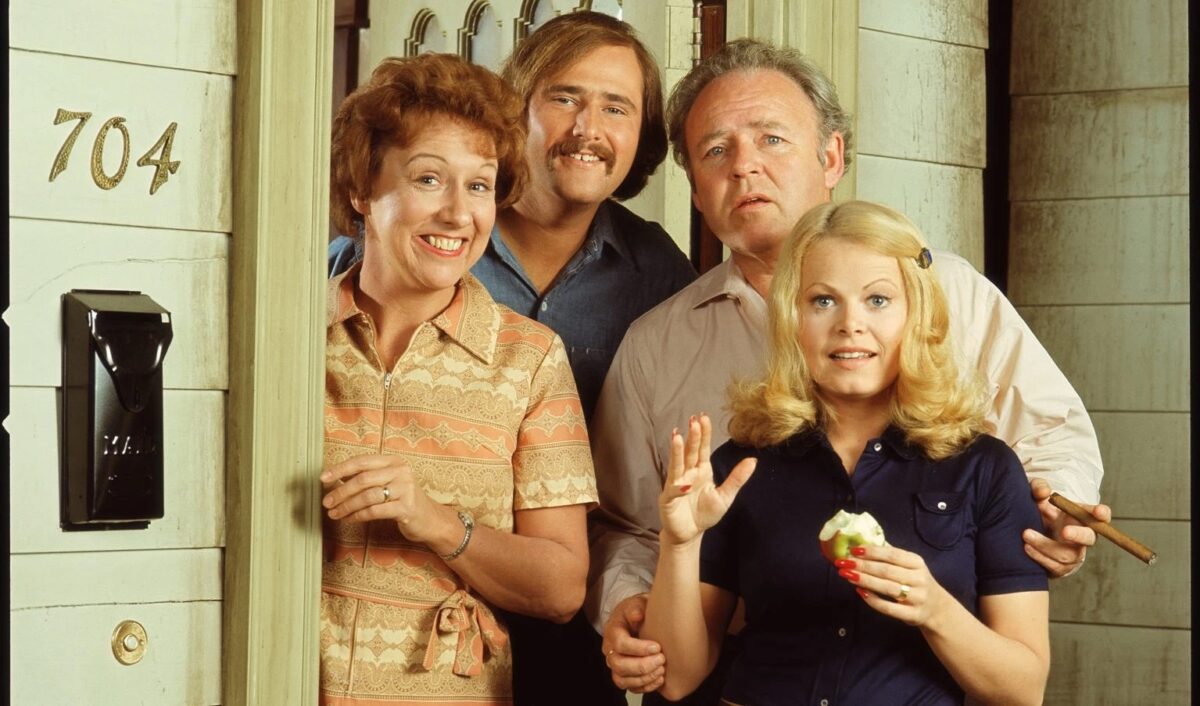
14 replies on “Movin’ On Up: New York City as depicted in the opening themes of 1970s TV shows”
Though not a 70’s show Bosom Buddies — 1980-1982 — glamorized an edgy NYC of then.
http://youtu.be/ZOKNgNFeC4s
I thought of that show, too! Who doesn’t love a young Tom Hanks?
I almost put Bosom Buddies in but left it out at last minute! I love the idea of two people living in a building that was being demolished….
You forgot
My personal Favorite!! And it was a Norman Lear show! Hot L Baltimore!! Funny as all hell!
I really liked that one too.
Interesting to see how much the iconic Mary Tyler Moore show opening credits borrowed from That Girl.
Although it technically took place in Tuckahoe, Maude used Manhattan in the opening credits much the same way All in the Family did (it was a spin off after all), only the intro traveled much further out of the city (via the GW) almost to say, we’re getting as far away from here as possible! Not much in the way of NYC shots (mostly the Chrysler Building), but for those not familiar… http://www.youtube.com/watch?v=g9NY8R-LmIw
OMG I just watched the Maude opening and being a native New Yorker I’m floored. You can’t take the George Washington Bridge to Tuckahoe! The GW goes to New Jersey. Tuckahoe is in Westchester County New York. Maude must have had one of those bad ole cabbies that took her for a long detour!!
When I saw the headline, the very first thing I thought of was Sesame Street. Maybe because that’s what I was watching in the 70s.
http://www.youtube.com/watch?v=jfQSp92L88I
This is what makes you guys the best. Details with time consuming research. Nice Job!
One small mistake: You listed the introduction of “That Girl” as being “Season 1 (1970). Season 1 of That Girl was actually 1966. 1970 was Season 4.
It might be worth drawing a distinction between the more saccharine shows with a ’60s mentality, like That Girl, which were hanging on to the powerful economy of the early 60s, and the grittier ’70s-minded shows which felt audiences wanted to, or had to, face more of the real problems going on. The shows themselves may have crossed the decades, but the mindsets were distinct and didn’t really change.
(Maybe worth an additional contrasting view–Naked City from 1963, that featured both gritty urban story lines and real NY locations)
Still like to look at that show.
McCloud didn’t bring a stagecoach to NYC, the stagecoach was already here! The Cattleman West at 154 West 51st Street, at Seventh Avenue, offered free stagecoach rides around the city. As for KOJAK, it started out using 2nd unit footage filmed in NYC but as the seasons continued, more and more 1st unit footage, featuring the cast, was filmed in NYC. If you want to watch police shows that were filmed entirely in NYC before Law and Order, try watching Naked City and Car 54, Where Are You? from the late ’50s/early ’60s.